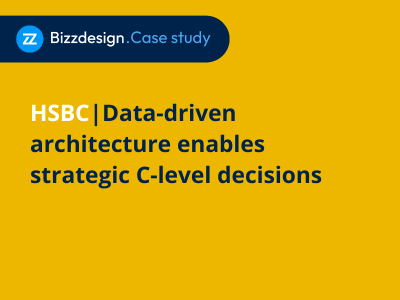



Book a call with us
How solution architects can benefit from enterprise architecture tools like Bizzdesign Horizzon.
Why commonly used diagramming tools like like Microsoft Visio, Lucidchart, and diagrams.net. might not suffice when mapping enterprise interdependencies.

As a solution architect, you have the important task of guiding your organization through transformations. Are you using the right design tool for this, or are you still struggling with an ineffective solution architecture toolchain that is too basic and becoming disorganized?
Most solution architects choose a familiar toolkit for design. For example, when it comes to diagramming or modeling, your go-to tooling may still be found in classic Microsoft Visio. Alternatively, new web-based tools such as Lucidchart and diagrams.net (formerly draw.io) seem to be on the rise and finding their way into the solution architects’ workflow.
This guide argues the necessity to use an enterprise architecture platform for solution architecture diagramming. The familiar architecture diagramming tools you use may be commendable for specific tasks. However, they often fall short in helping you design solutions that align with your organization's business goals and integrate well with the broader architecture.
Similarly, while conventional architecture diagramming tools are great for basic visualizations and work in more straightforward scenarios, they often struggle to capture the granularity, interdependencies, and comprehensive view required for holistic enterprise and solution architecture.
For a nuanced, in-depth, and efficient design process, you need a tool, such as an enterprise architecture platform, that caters to the complexities of today's digital enterprise environment.
Read on for a detailed explanation.



Application Portfolio Management Plus (APM+) at-a-glance

The real benefit of application portfolio management
BLOG
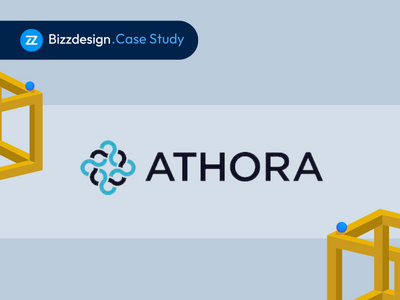
Athora Insurance
rationalizes their application landscape
BLOG

Let’s show you how Bizzdesign Horizzon can help you see the bigger picture
Learn from these
related resources
• Microsoft Visio has extensive features
for creating detailed organizational
charts, flowcharts, and complex
diagrams.
• Lucidchart offers robust collaborative
diagramming tools that are web-
based and user-friendly.
• diagrams.net is favored for its
straightforward interface and
flexibility in diagram creation without
software installation.
Each tool has unique strengths that make it suitable for different diagramming and presentation needs. Yet, for solution architects charting complex digital landscapes, there's a need for deeper analysis, interdependency mapping, scalability insights, and a comprehensive understanding of your organization's digital framework. The answer lies in using an enterprise architecture tool to support centralized, end-to-end design processes.
But first, let's look at terminology.
Understanding the technologies:
1. Comprehensive insight into the entire enterprise's architecture
GUIDE
What you'll learn from this guide:
Introduction
Using an enterprise architecture tool
vs. a tool for
architecture diagrams


Source: Bizzdesign Horizzon

Source: Bizzdesign Horizzon

Comprehensive insight into the entire enterprise's architecture
Advanced modeling that maps out interdependencies
In-depth analytics propelling informed decisions
Holistic collaboration across enterprise stakeholders
Standardization in diagramming practice across solution architects
Conclusion
Success stories: Why an enterprise architecture tool for solution architecture
How KeyBank saved an est. 10% in architecture creation and approval
Ameren experiences 30% est. timesaving by streamlining processes
Author's biography: Matthijs Scholten
Lucidchart and diagrams.net are premier choices for standard diagramming needs, adeptly handling flowcharts, organizational structures, and network designs. However, when it comes to portraying the complex interconnections and relationships of an entire enterprise, they may not suffice.
In contrast, enterprise architecture tools are designed with this vast scope in mind. They not only visualize ideas and options, but provide the potential for deep analysis of the architecture landscape, granting companies the foresight to manage impacts, optimize operations, and minimize risk and redundancies.
Let's delve deeper:
Microsoft Visio, known for its comprehensive diagramming capabilities, may fall short of delivering the specialized functionality that enterprise architecture demands. Especially if you want a robust mechanism for continually updating and analyzing the complex interrelationships and dependencies that define an enterprise's IT landscape.
Excellent for team collaborations and free format diagramming, Lucidchart may not be suitable if you need in-depth analysis to understand intricate enterprise relationships.
While it's intuitive for creating straightforward diagrams, diagrams.net, may not be suitable if you require real-time data integration, dynamic data visualization, or deeper architectural analysis.
While valuable for specific diagramming tasks such as brainstorming and ideation, each of these tools does not fully accommodate the nuanced requirements of enterprise architecture. On the other hand, a specialized enterprise architecture tool is designed to integrate, manage, and synthesize the extensive data and system interdependencies that underlie an organization's structure. This level of detail, integration, and analytical power sets enterprise architecture tools apart and makes them essential for organizations seeking to navigate and optimize their complex architectures effectively.
•
•
•
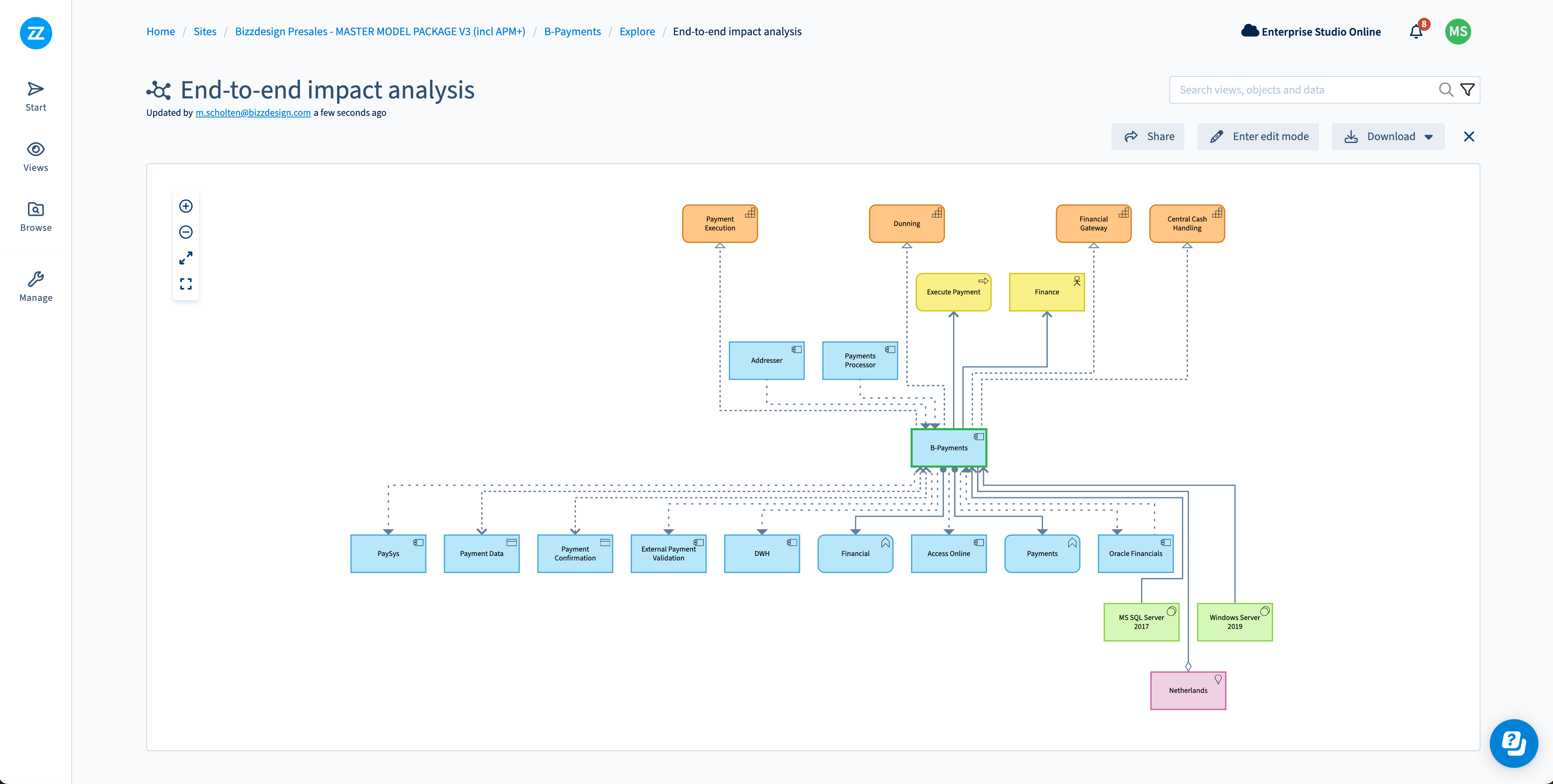
Enterprise architecture tools provide full visibility of IT ecosystems.
A central enterprise architecture repository ensures data is consistent and updated
Outperforms diagramming tools in analysis and large dataset handling.
2. Advanced modeling that maps out interdependencies
Tools like Microsoft Visio, Lucidchart, and diagrams.net are favored by many for their ease of use in diagramming, especially in settings where basic visualization suffices. Yet, as businesses expand and their structures become more intricate, the shortcomings of these tools become more apparent:
While renowned for diagramming, Microsoft Visio doesn’t quite reach the sophistication needed for enterprise modeling. It excels in visuals but may not offer dynamic, interconnected models that provide deep analytical insights, a critical limitation when adjusting representations for varied stakeholders.
Lucidchart is a powerful diagramming tool but may not offer the deep modeling capabilities necessary for analyzing complex enterprise systems. It provides excellent visuals but may not be suitable if you’re looking for model-based analyses, which are essential for aligning with different business and architectural perspectives.
diagrams.net is known for its intuitive design, making it accessible to many users. However, it may not offer the depth of advanced analysis features that some specialized users require.
In stark contrast, specialized enterprise architecture tools truly connect the dots between architecture elements, being equipped with features that align with the advanced needs of modern architectural frameworks. They accommodate key enterprise architecture modeling languages, offer sophisticated connector utilities, and include robust validation engines.
The enterprise architecture repository of these specialized tools is a unified database that houses all relevant data and models, ideally based on open standards such as ArchiMate. This centralization guarantees data uniformity, enabling architects to accurately model an organization's infrastructure's present and future states. Moreover, these tools provide diverse modeling perspectives, allowing architects to assess their infrastructure from different vantage points, such as risk, investment, or overall health, which is crucial for informed decision-making.
Furthermore, enterprise architecture tools are designed to go beyond basic visualization. They can create models that encapsulate the elaborate networks that run through an enterprise, offering a centralized data model and standardized practices for modeling. These models are dynamic and are often updated in real-time, providing a variety of scenarios that enhance strategic planning and decision-making.
Enterprise architecture tools excel in modeling with tailored features.
A central repository in enterprise archtecture tools ensures data consistency and accessiblity.
Enterprise archtecture tools support informated decision-making with various view lenses.
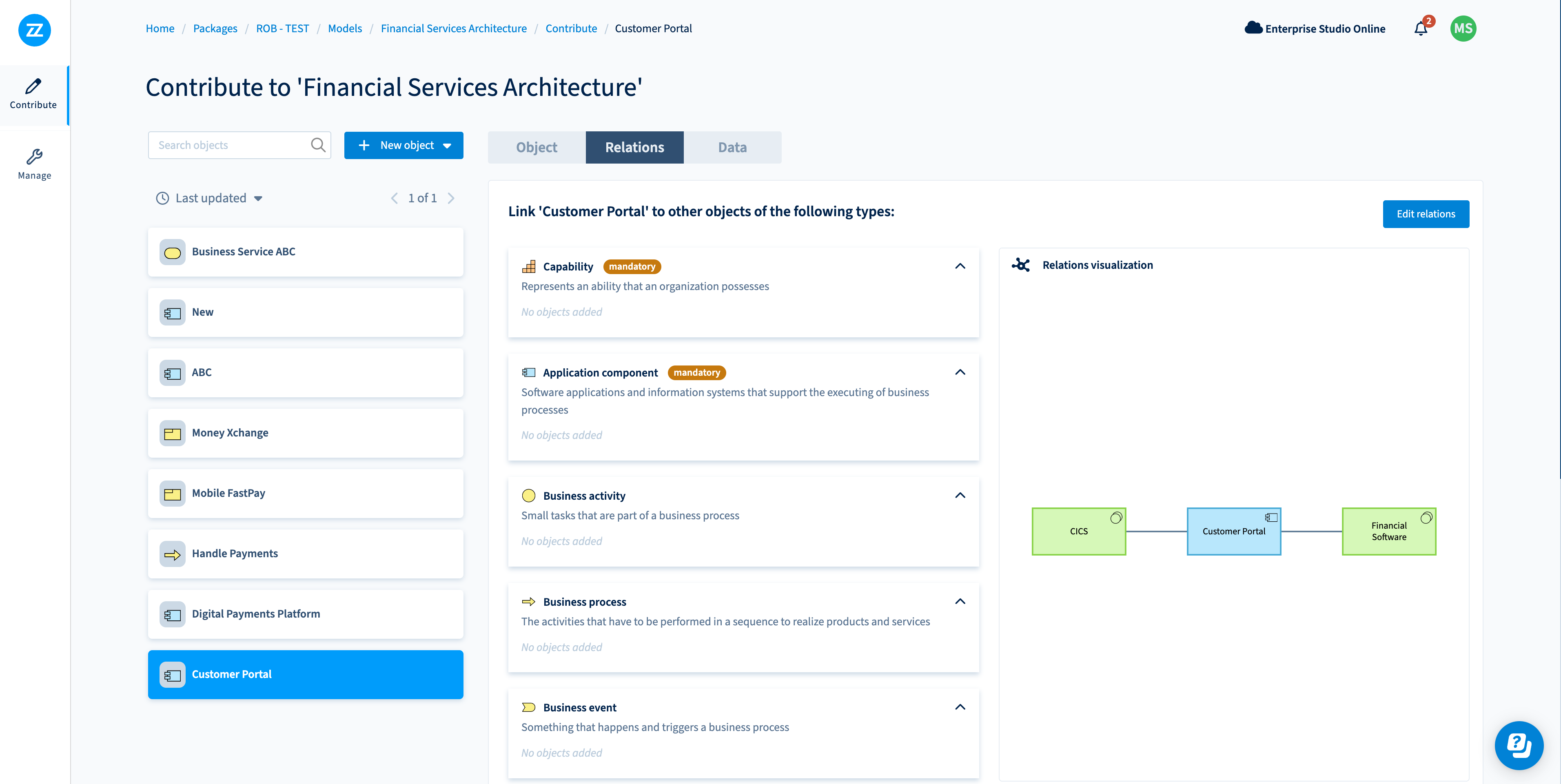
3. In-depth analytics propelling informed decisions
Change within business landscapes is multifaceted, encompassing a variety of roles, technological tools, capabilities, and interconnections. While beneficial for diagramming, tools like Microsoft Visio, Lucidchart, and diagrams.net fall short of providing the comprehensive insight solution architects demand.
Here's the breakdown:
Microsoft Visio is adept at representing relationships through diagrams but in our opinion does not quite offer the analytical depth required for intricate detailing and thorough analysis expected in enterprise architecture.
Lucidchart excels in diagramming and visual representations yet it may lack the rigor to model complex business architectures with the necessary depth.
diagrams.net provides commendable diagramming capabilities but may fall short in structurally linking data to a company’s broader strategic objectives or roadmaps.
•
•
•
The true power of enterprise architecture emerges from insights gained by integrating data-driven models with attributes, metrics, and contextual data. Without the robust modeling foundation that specialized enterprise architecture tools provide, there's a risk of relying on disjointed figures and visuals that fail to deliver a comprehensive understanding. Most importantly, this results in poor data quality of architectural models, making them unfit for decision-making.
The ability of enterprise architecture tools to integrate data from various perspectives and models makes them invaluable. They enable the creation of clear roadmap dashboards and offer crucial visualization aids such as heat maps. These tools are excellent in communicating complex information but are also adaptable to the diverse communication needs of different stakeholders. Using standardized ways to capture enterprise models provides the foundation for more consistent storytelling, resulting in high engagement with decision-makers.
Source: Bizzdesign Horizzon

•
•
•
For solution architects, specialized enterprise architecture tools are not just beneficial but essential, offering:
1. Impact analysis: To understand the potential ripple effects of decisions across the enterprise.
2. Dependency analysis: To gauge the interconnections and dependencies within and across business units.
3. Process analysis: To dive deep into the flow of business processes for optimization and streamlining.
4. Lifecycle analysis: To track the enterprise's evolution and phasing of architecture components.
5. Value analysis: To discern business and technical value in investments and operations.
6. Financial analysis: Understand the financial implications of architectural decisions and IT investments.
7. Risk and security analyses: To evaluate vulnerabilities and ensure compliance with security requirements.
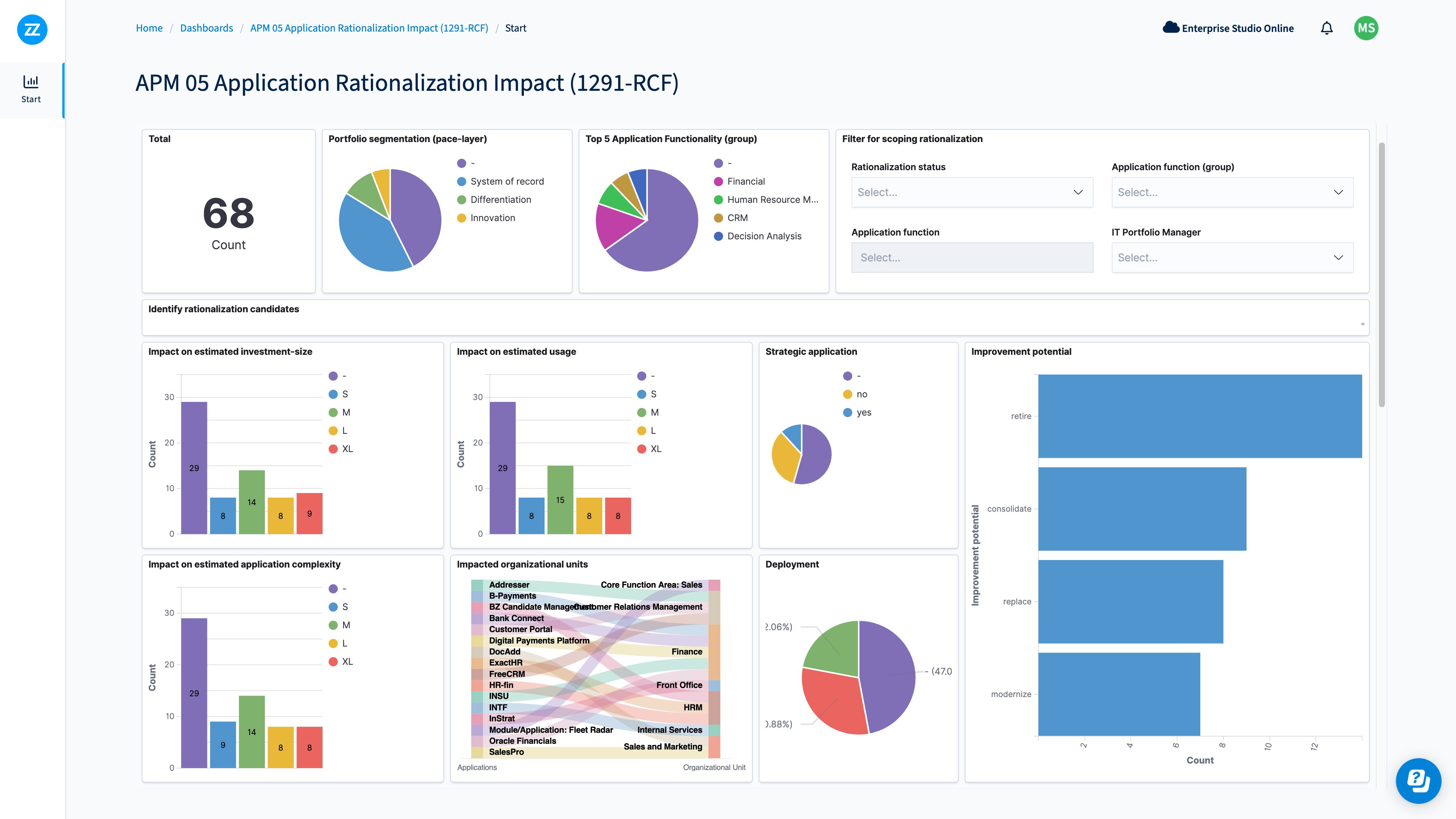
•
•
•
4. Holistic collaboration across enterprise stakeholders
The true power of an enterprise architecture tool for solution architects is its adeptness at presenting complex data effectively. Through tailored reports, dashboards, and visual aids, these tools bridge the gap between intricate technical details and accessible communication. The outcome is a uniform understanding, deep insights, and improved collaboration throughout the organization by offering a variety of tailored stakeholder perspectives.
Microsoft Visio is proficient in diagramming and provides a range of features, yet it may not fully cater to the depth required for efficient communication of multiple viewpoints that address complex enterprise insights.
Lucidchart offers a seamless experience for diagramming but in our opinion lacks the capabilities to manage and convey complex enterprise details to various stakeholders.
diagrams.net, while a powerful tool for creating diagrams, may not be suitable if you want to create artifacts for decision-makers, such as scenario views, roadmaps, and dashboards supporting numerous architectural analyses.
•
•
•

Source: Bizzdesign Horizzon
From our experience, when teams rely solely on Microsoft Visio, Lucidchart, or diagrams.net, they often encounter fragmentation. Each team may operate within its isolated instance, leading to inconsistency across versions and alignment challenges in collaborative efforts. It's not unusual to encounter outdated diagrams or disconnected data silos, which hamper effective teamwork.
In contrast, specialized enterprise architecture tools are designed to enhance collaborative processes. Insights, models, and outputs are easily shared among architects, irrespective of their physical locations. With a centralized enterprise architecture repository, a single source of truth is accessible and consistently updated, fostering a streamlined workflow. This centralization facilitates real-time insights and updates for every stakeholder and yields measurable efficiencies.
This centralized approach allows all stakeholders, from technical teams to executive boards, to convene on a shared platform, promoting streamlined communication and a clear understanding of the architecture and its implications. Features like version control, synchronized editing, and role-specific access contribute to a cohesive, collaborative, and secure environment.
In practice, solution architects experience an estimated 10% time-saving in the creation and approval of architectures, underscoring the tangible benefits of a unified system.
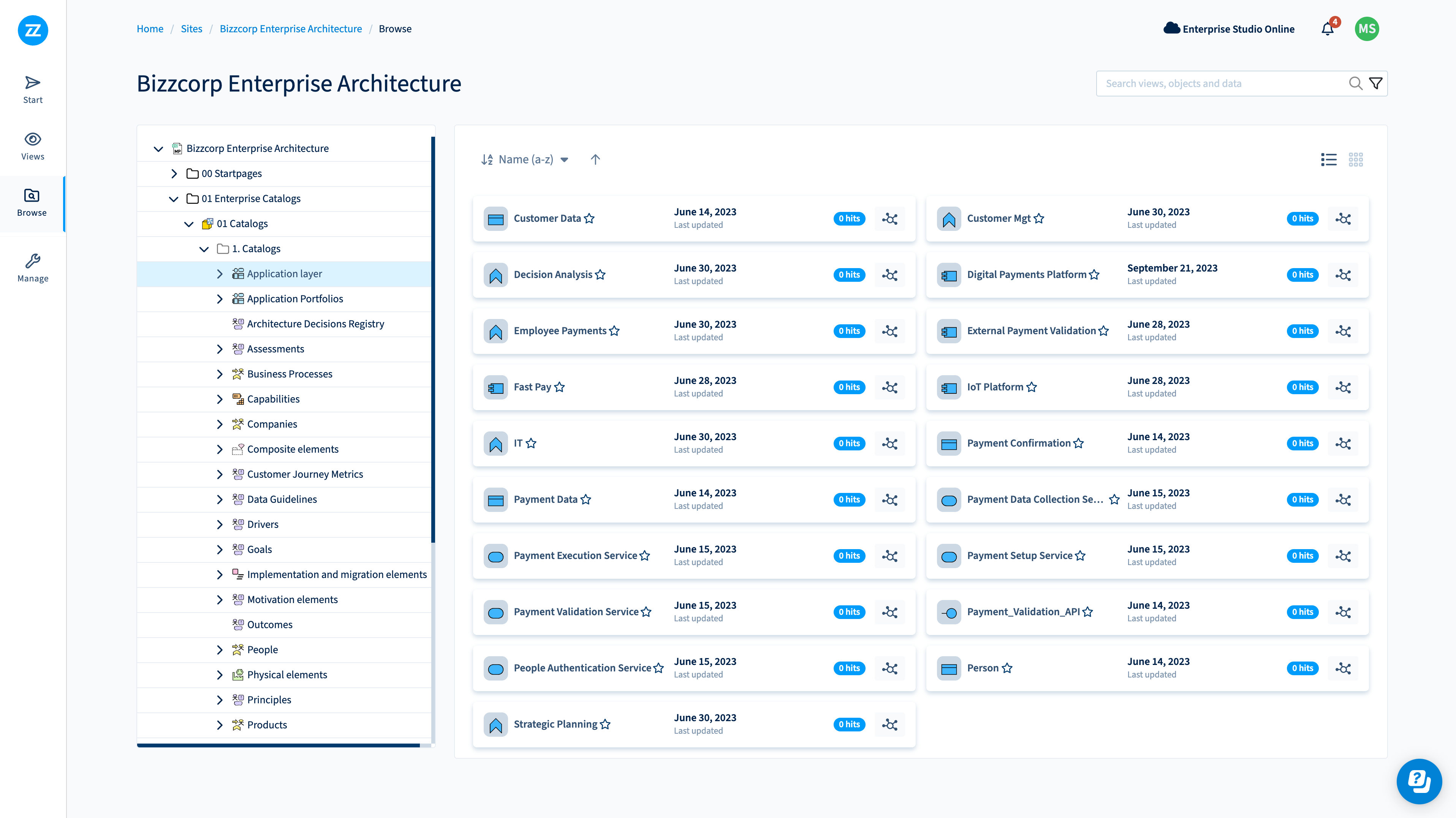
5. Standardization in diagramming practice across solution architects
Popular diagramming tools like Microsoft Visio, Lucidchart, and diagrams.net provide a well-known workspace for many solution architects. Although they are proficient at handling more straightforward tasks, their constraints are clear when uniform diagramming practices are necessary, as well as ensuring consistent data representations:
Microsoft Visio is praised for its diagramming prowess, yet from our experience it may struggle with real-time integrations and data synchronization in complex projects running in parallel.
Lucidchart facilitates team collaboration effectively but you may find yourself challenged when it comes to real-time integrations and maintaining consistency across complex enterprise projects.
diagrams.net offers a user-friendly environment but may lack the capability to handle the granularity and complexity required for enterprise-level diagramming practices in distributed solution architecture teams.
•
•
•
The absence of a unified standard in these platforms can lead to each architect developing their personalized data representation methods. This can result in significant hurdles as teams scale and projects become more complex, with variations in diagrams leading to confusion, miscommunication, and high opportunity costs.
In contrast, enterprise architecture tools place standardization at their core. They provide advanced diagramming features that align all solution architects to unified practices. These tools support a standardized diagramming approach with consistent template libraries, uniform notation systems, and suitable collaboration features.
Furthermore, enterprise architecture tools leverage integration with other systems, ensuring diagrams continuously reflect the most current data. By centralizing the diagramming process, these tools eradicate the inconsistencies that typically emerge from using diverse platforms.
For solution architects prioritizing maintaining a consistent, standardized approach across teams, transitioning from individual diagramming tools to an integrated enterprise architecture solution is a strategic and forward-thinking decision as it will significantly improve the quality of the data that solution architects use for their daily work.
Source: Bizzdesign Horizzon

Enterprise architecture tools integrate real-time data, fostering seamless, efficient operations.
They enable data consolidation from various sources, aiding informed decision-making.
Automated processes in these tools enhance collaboration, covhernance and adaptability.
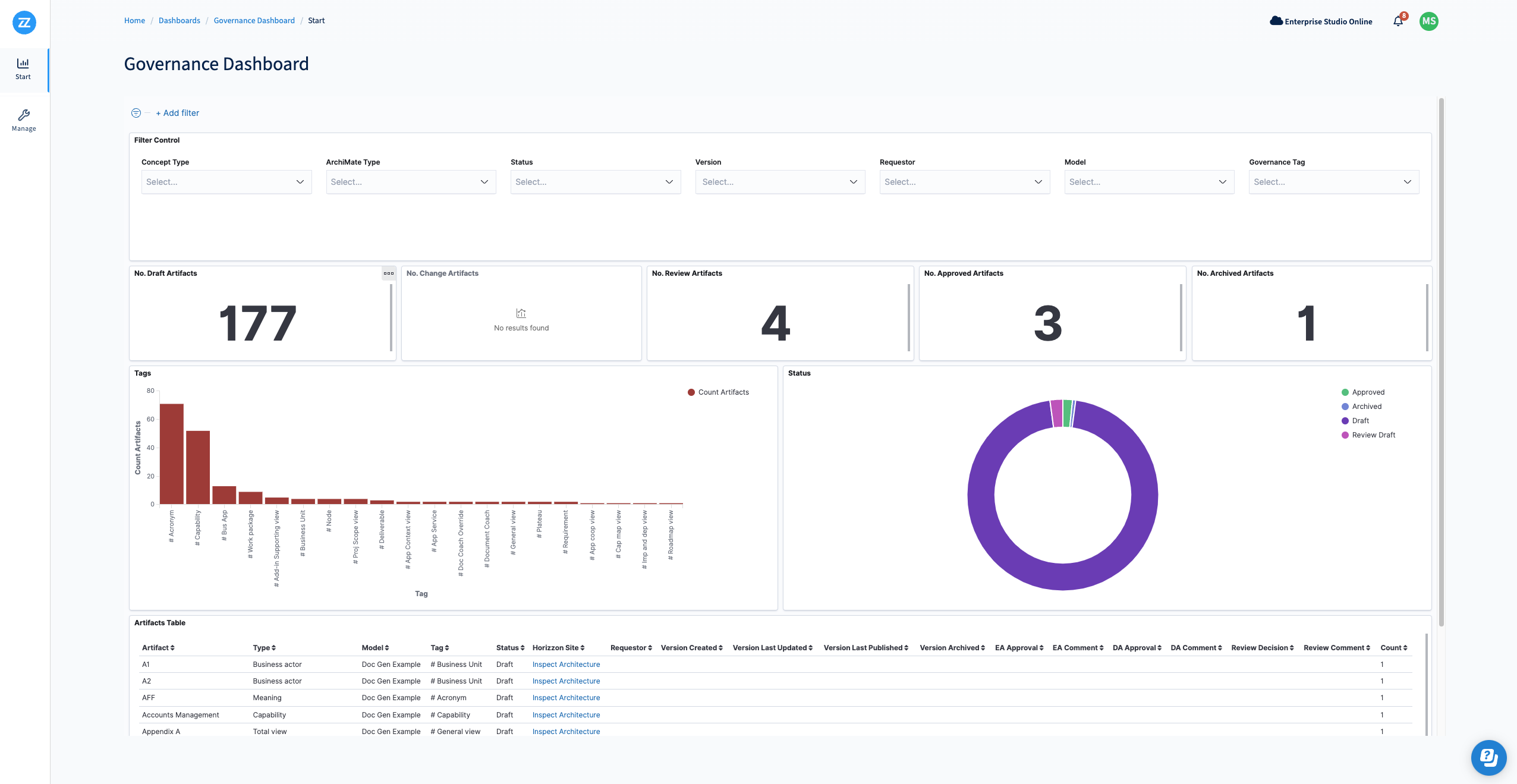
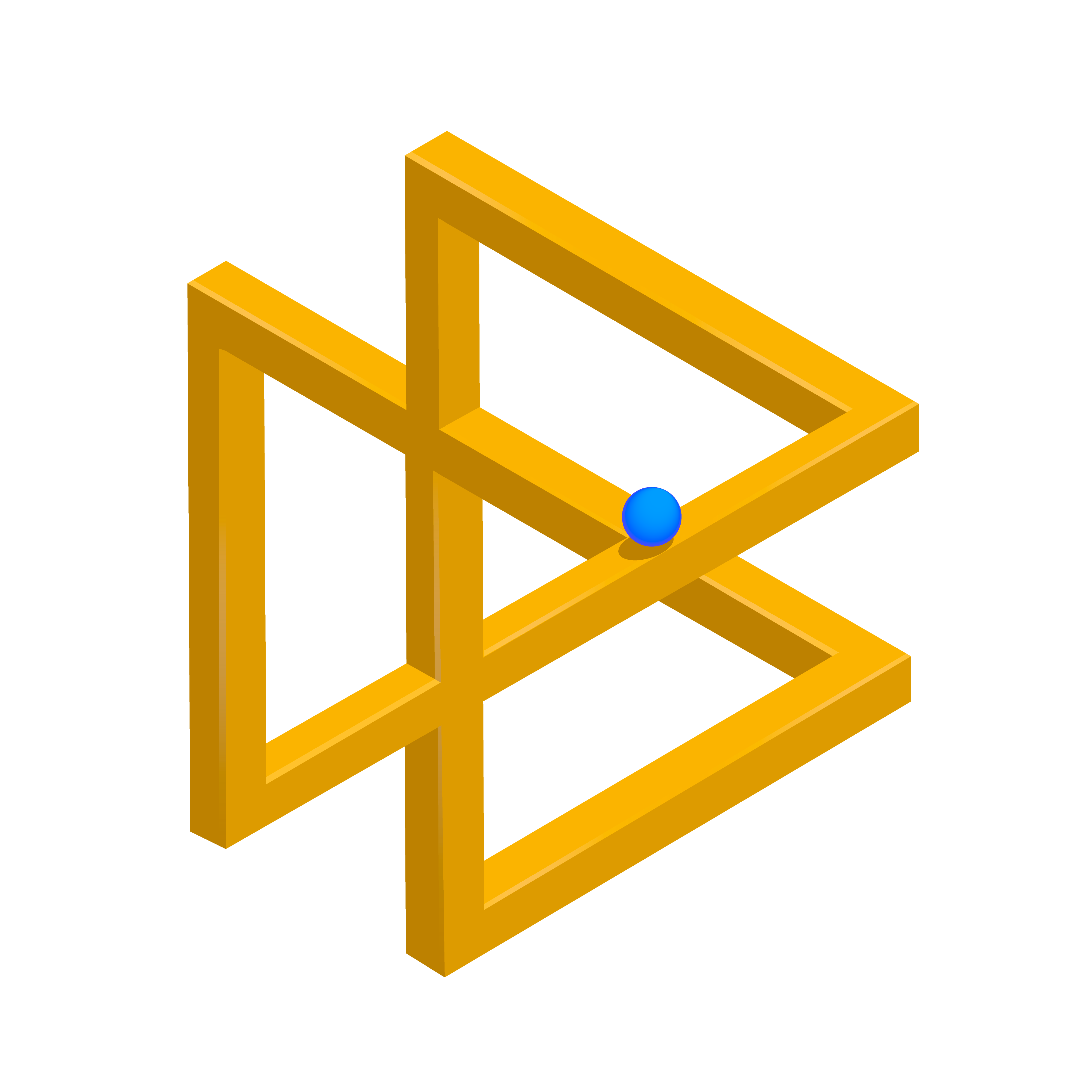
Conclusion: Choosing the right tool for your digital blueprint
When guiding the digital trajectory of your projects, the tools you employ are paramount to the success of your designs. While the comfort of Microsoft Visio, Lucidcharts, and diagrams.net might resonate with past experiences, it may be time to explore an alternative: an enterprise architecture tool.
Consider the bigger picture: integration and scalability. Will these diagramming tools rise to the challenge as your projects increase in complexity and scope? Enterprise architecture tools are sculpted precisely with this expansive vision, ensuring adaptability, dependability, and standardization at every turn.
Shifting to an enterprise architecture tool isn't just a decision for the present – it's a strategic move for the future. As you architect the digital foundations of tomorrow, arm yourself with tools designed for the horizon ahead.
Enterprise architecture tools provide a central repository for analyzing data and metadata about a range of artifacts organizations care about.
Source: Gartner, Inc


About the Author:
Matthijs Scholten
Matthijs Scholten is product and innovation manager at Bizzdesign. He is responsible for Bizzdesign’s product strategy and product development. Leveraging his consulting experience in complex business transformation projects and his passion for people, design, and technology, Matthijs puts all his creativity into building Bizzdesign’s leading enterprise SaaS platform for customers all over the globe.


Ameren creates a consistent, structured solution architecture
Ameren Corporation is a Fortune 500 company that provides safe, reliable, and sustainable energy solutions to 2.4 million+ and 900,000+ natural gas customers across a 64,0000 square mile area.
Ameren's enterprise architecture practice includes 20 architects covering portfolio, solution, domain, and network architecture.
Before the solution architecture team was in place, the architectural review of projects was conducted by technical domain architects. Their focus was on engineering and detailed system-level designs, making it challenging to prioritize solution architecture functionality. Manual methods like Microsoft Office PowerPoint and Visio were used instead of modeling tools, leading to the late discovery of architectural and design issues and causing delays and budget overruns.
"Bizzdesign has been a game-changer in transforming our solution architecture, supporting us to streamline processes and make high-level views consistent."
Daniel J. Waller, Lead Solution Architect at Ameren
READ MORE
click through to case study


How KeyBank created a centralized solution architecture diagram repository
KeyBank is a large regional financial services company located within the United States of America. They have over 1,000 branches and 40,000 ATMs scattered over 15 states. They have about 20 architects from solution, domain, business, and enterprise, all guided by a Chief Architect. Collectively, the team manages an estimated 1,600 individually identified applications.
KeyBank's enterprise architecture management team lacked a centralized repository for their solution architecture diagrams. They were using Microsoft PowerPoint and Visio to design and store diagrams. This approach dispersed diagrams across multiple SharePoint sites and shared drives, making finding and extracting solutions difficult.
The team needed a central architecture repository to locate reliable, clean diagrams quickly.
Results achieved with Bizzdesign:
• Est. 10% time-saving in architecture creation and approval
• Central repository boosts efficiency
• Common language promotes consistency
• A unified architecture framework ensures governance
• Collaborative enterprise architecture tool fosters teamwork
• Consistent standards enhance data integrity
"Our centralized Bizzdesign architecture repository gives us a solid foundation to work from and a common language for architects. Now we can find, understand, and analyze information more easily and efficiently, reducing the headaches in aggregating our application data."
Alistair Bailey, Enterprise Architect at KeyBank
READ MORE!
click through to case study
asdf
Success stories:
From Office tools to a single-point enterprise architecture tool
KeyBank now has a consistent and stable 'source of truth' that enforces a common notation system

Ameren wanted an enterprise architecture platform with standardization, collaboration, and effective communication across architectural domains.
Results achieved with Bizzdesign:
• 30% est. timesaving by streamlining processes
• Capturing metrics enables better decision-making
• Speeding up the architectural process by approx. 10%
• Standardization promotes consistency
• Increased collaboration improves decision-making
• 50% est. timesaving in onboarding new stakeholders
• Working smarter by reusing existing materials

What is an enterprise architecture tool?
An enterprise architecture tool organizes, analyzes, and visualizes an organization's structure, information, and technology. They allow you to see the impact of change because they capture the interrelationships and interdependencies between your organization's ecosystem of operating models, capabilities, partners, people, processes, information, and technologies.
Quick
Links
1.
2.
3.
4.
5.
6.
7.
8.
9.
10.


[GLOSE]


[GLOSE]

[GLOSE]



[GLOSE]


[GLOSE]

1.
2.
3.
4.
5.
6.
7.
8.
9.
10.
1. Comprehensive insight into the entire enterprise's architecture
Lucidchart and diagrams.net are premier choices for standard diagramming needs, adeptly handling flowcharts, organizational structures, and network designs. However, when it comes to portraying the complex interconnections and relationships of an entire enterprise, they may not suffice.
In contrast, enterprise architecture tools are designed with this vast scope in mind. They not only visualize ideas and options, but provide the potential for deep analysis of the architecture landscape, granting companies the foresight to manage impacts, optimize operations, and minimize risk and redundancies.
Let's delve deeper:
Microsoft Visio, known for its comprehensive diagramming capabilities, may fall short of delivering the specialized functionality that enterprise architecture demands. Especially if you want a robust mechanism for continually updating and analyzing the complex interrelationships and dependencies that define an enterprise's IT landscape.
Excellent for team collaborations and free format diagramming, Lucidchart may not be suitable if you need in-depth analysis to understand intricate enterprise relationships.
While it's intuitive for creating straightforward diagrams, diagrams.net, may not be suitable if you require real-time data integration, dynamic data visualization, or deeper architectural analysis.
While valuable for specific diagramming tasks such as brainstorming and ideation, each of these tools does not fully accommodate the nuanced requirements of enterprise architecture. On the other hand, a specialized enterprise architecture tool is designed to integrate, manage, and synthesize the extensive data and system interdependencies that underlie an organization's structure. This level of detail, integration, and analytical power sets enterprise architecture tools apart and makes them essential for organizations seeking to navigate and optimize their complex architectures effectively.
•
•
•
2. Advanced modeling that maps out interdependencies
Tools like Microsoft Visio, Lucidchart, and diagrams.net are favored by many for their ease of use in diagramming, especially in settings where basic visualization suffices. Yet, as businesses expand and their structures become more intricate, the shortcomings of these tools become more apparent:
While renowned for diagramming, Microsoft Visio doesn’t quite reach the sophistication needed for enterprise modeling. It excels in visuals but may not offer dynamic, interconnected models that provide deep analytical insights, a critical limitation when adjusting representations for varied stakeholders.
Lucidchart is a powerful diagramming tool but may not offer the deep modeling capabilities necessary for analyzing complex enterprise systems. It provides excellent visuals but may not be suitable if you’re looking for model-based analyses, which are essential for aligning with different business and architectural perspectives.
diagrams.net is known for its intuitive design, making it accessible to many users. However, it may not offer the depth of advanced analysis features that some specialized users require.
•
•
•
In stark contrast, specialized enterprise architecture tools truly connect the dots between architecture elements, being equipped with features that align with the advanced needs of modern architectural frameworks. They accommodate key enterprise architecture modeling languages, offer sophisticated connector utilities, and include robust validation engines.
The enterprise architecture repository of these specialized tools is a unified database that houses all relevant data and models, ideally based on open standards such as ArchiMate. This centralization guarantees data uniformity, enabling architects to accurately model an organization's infrastructure's present and future states. Moreover, these tools provide diverse modeling perspectives, allowing architects to assess their infrastructure from different vantage points, such as risk, investment, or overall health, which is crucial for informed decision-making.
Furthermore, enterprise architecture tools are designed to go beyond basic visualization. They can create models that encapsulate the elaborate networks that run through an enterprise, offering a centralized data model and standardized practices for modeling. These models are dynamic and are often updated in real-time, providing a variety of scenarios that enhance strategic planning and decision-making.
3. In-depth analytics propelling informed decisions
Change within business landscapes is multifaceted, encompassing a variety of roles, technological tools, capabilities, and interconnections. While beneficial for diagramming, tools like Microsoft Visio, Lucidchart, and diagrams.net fall short of providing the comprehensive insight solution architects demand.
Here's the breakdown:
Microsoft Visio is adept at representing relationships through diagrams but in our opinion does not quite offer the analytical depth required for intricate detailing and thorough analysis expected in enterprise architecture.
Lucidchart excels in diagramming and visual representations yet it may lack the rigor to model complex business architectures with the necessary depth.
diagrams.net provides commendable diagramming capabilities but may fall short in structurally linking data to a company’s broader strategic objectives or roadmaps.
•
•
•
The true power of enterprise architecture emerges from insights gained by integrating data-driven models with attributes, metrics, and contextual data. Without the robust modeling foundation that specialized enterprise architecture tools provide, there's a risk of relying on disjointed figures and visuals that fail to deliver a comprehensive understanding. Most importantly, this results in poor data quality of architectural models, making them unfit for decision-making.
The ability of enterprise architecture tools to integrate data from various perspectives and models makes them invaluable. They enable the creation of clear roadmap dashboards and offer crucial visualization aids such as heat maps. These tools are excellent in communicating complex information but are also adaptable to the diverse communication needs of different stakeholders. Using standardized ways to capture enterprise models provides the foundation for more consistent storytelling, resulting in high engagement with decision-makers.
For solution architects, specialized enterprise architecture tools are not just beneficial but essential, offering:
1. Impact analysis: To understand the potential ripple effects of decisions across the enterprise.
2. Dependency analysis: To gauge the interconnections and dependencies within and across business units.
3. Process analysis: To dive deep into the flow of business processes for optimization and streamlining.
4. Lifecycle analysis: To track the enterprise's evolution and phasing of architecture components.
5. Value analysis: To discern business and technical value in investments and operations.
6. Financial analysis: Understand the financial implications of architectural decisions and IT investments.
7. Risk and security analyses: To evaluate vulnerabilities and ensure compliance with security requirements.
4. Holistic collaboration across enterprise stakeholders
The true power of an enterprise architecture tool for solution architects is its adeptness at presenting complex data effectively. Through tailored reports, dashboards, and visual aids, these tools bridge the gap between intricate technical details and accessible communication. The outcome is a uniform understanding, deep insights, and improved collaboration throughout the organization by offering a variety of tailored stakeholder perspectives.
From our experience, when teams rely solely on Microsoft Visio, Lucidchart, or diagrams.net, they often encounter fragmentation. Each team may operate within its isolated instance, leading to inconsistency across versions and alignment challenges in collaborative efforts. It's not unusual to encounter outdated diagrams or disconnected data silos, which hamper effective teamwork.
In contrast, specialized enterprise architecture tools are designed to enhance collaborative processes. Insights, models, and outputs are easily shared among architects, irrespective of their physical locations. With a centralized enterprise architecture repository, a single source of truth is accessible and consistently updated, fostering a streamlined workflow. This centralization facilitates real-time insights and updates for every stakeholder and yields measurable efficiencies.
This centralized approach allows all stakeholders, from technical teams to executive boards, to convene on a shared platform, promoting streamlined communication and a clear understanding of the architecture and its implications. Features like version control, synchronized editing, and role-specific access contribute to a cohesive, collaborative, and secure environment.
“In practice, solution architects have experienced an estimated 10% time-saving in the creation and approval of architectures, underscoring the tangible benefits of a unified system.”
Microsoft Visio is proficient in diagramming and provides a range of features, yet it may not fully cater to the depth required for efficient communication of multiple viewpoints that address complex enterprise insights.
Lucidchart offers a seamless experience for diagramming but in our opinion lacks the capabilities to manage and convey complex enterprise details to various stakeholders.
diagrams.net, while a powerful tool for creating diagrams, may not be suitable if you want to create artifacts for decision-makers, such as scenario views, roadmaps, and dashboards supporting numerous architectural analyses.
5. Standardization in diagramming practice across solution architects
Popular diagramming tools like Microsoft Visio, Lucidchart, and diagrams.net provide a well-known workspace for many solution architects. Although they are proficient at handling more straightforward tasks, their constraints are clear when uniform diagramming practices are necessary, as well as ensuring consistent data representations:
Microsoft Visio is praised for its diagramming prowess, yet from our experience it may struggle with real-time integrations and data synchronization in complex projects running in parallel.
Lucidchart facilitates team collaboration effectively but you may find yourself challenged when it comes to real-time integrations and maintaining consistency across complex enterprise projects.
diagrams.net offers a user-friendly environment but may lack the capability to handle the granularity and complexity required for enterprise-level diagramming practices in distributed solution architecture teams.
•
•
•
The absence of a unified standard in these platforms can lead to each architect developing their personalized data representation methods. This can result in significant hurdles as teams scale and projects become more complex, with variations in diagrams leading to confusion, miscommunication, and high opportunity costs.
In contrast, enterprise architecture tools place standardization at their core. They provide advanced diagramming features that align all solution architects to unified practices. These tools support a standardized diagramming approach with consistent template libraries, uniform notation systems, and suitable collaboration features.
Furthermore, enterprise architecture tools leverage integration with other systems, ensuring diagrams continuously reflect the most current data. By centralizing the diagramming process, these tools eradicate the inconsistencies that typically emerge from using diverse platforms.
Text BoxText BoxFor solution architects prioritizing maintaining a consistent, standardized approach across teams, transitioning from individual diagramming tools to an integrated enterprise architecture solution is a strategic and forward-thinking decision as it will significantly improve the quality of the data that solution architects use for their daily work.
•
•
•

Using an enterprise architecture tool vs. a tool for architecture diagrams
Quick
Links
Comprehensive insight into the entire enterprise's architecture
Advanced modeling that maps out interdependencies
In-depth analytics propelling informed decisions
Holistic collaboration across enterprise stakeholders
Standardization in diagramming practice across solution architects
Conclusion
Success stories: Why an enterprise architecture tool for solution architecture
How KeyBank saved an est. 10% in architecture creation and approval
Ameren experiences 30% est. timesaving by streamlining processes
Author's biography:
Matthijs Scholten
•
•
•
•
•
•
Enterprise architecture tools integrate data for insightful analysis, offering various visualization features.
Specialized tools perform comprehensive analyses, from impact to financial, in one place.
Unlike diagramming tools, they provide a structural view of informed, meaningful
business insights.
Enterprise architecture tools facilitate clear, comprehensive insight sharing among team members globally.
They offer a unified, accessible repository, enhancing collaboration and governance.
These tools bridge the gab between complex insights and clear communication effectively.
•
•
•
"
"
Source: Bizzdesign Horizzon
•
•
•
"
"
•
•
•
•
•
•
•
•
•
Enterprise architecture tools facilitate clear, comprehensive insight sharing among team members globally.
They offer a unified, accessible repository, enhancing collaboration and governance.
These tools bridge the gab between complex insights and clear communication effectively.
Enterprise architecture tools integrate data for insightful analysis, offering various visualization features.
Specialized tools perform comprehensive analyses, from impact to financial, in one place.
Unlike diagramming tools, they provide a structural view of informed, meaningful
business insights.
Solution Architecture Foundations for a Digital Enterprise
BLOG
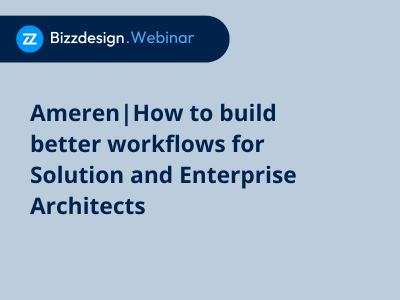
Success story HSBC
BLOG
